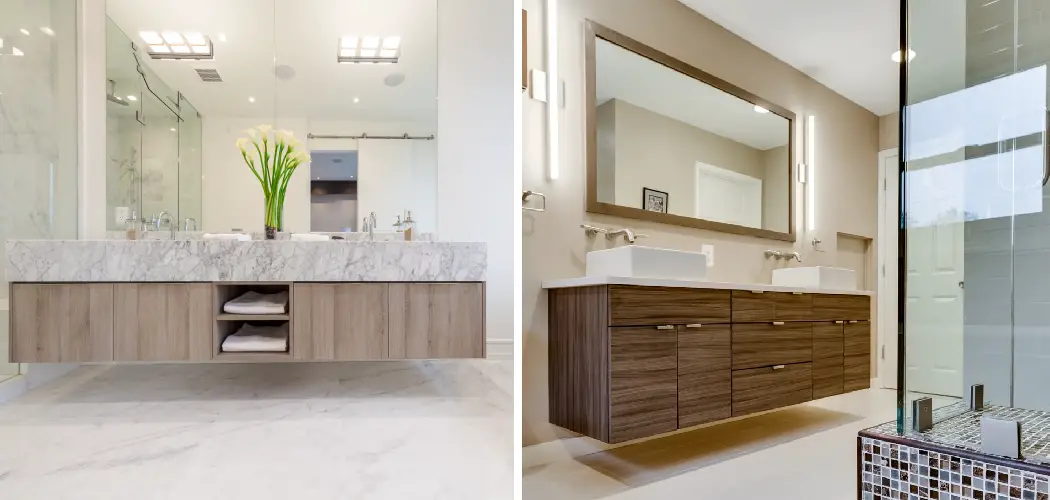Are you interested in upgrading your bathroom with a modern look? Installing a floating vanity is the perfect way to achieve this. Floating vanities are an elegant and stylish solution that instantly transforms any bathroom into something more inviting.
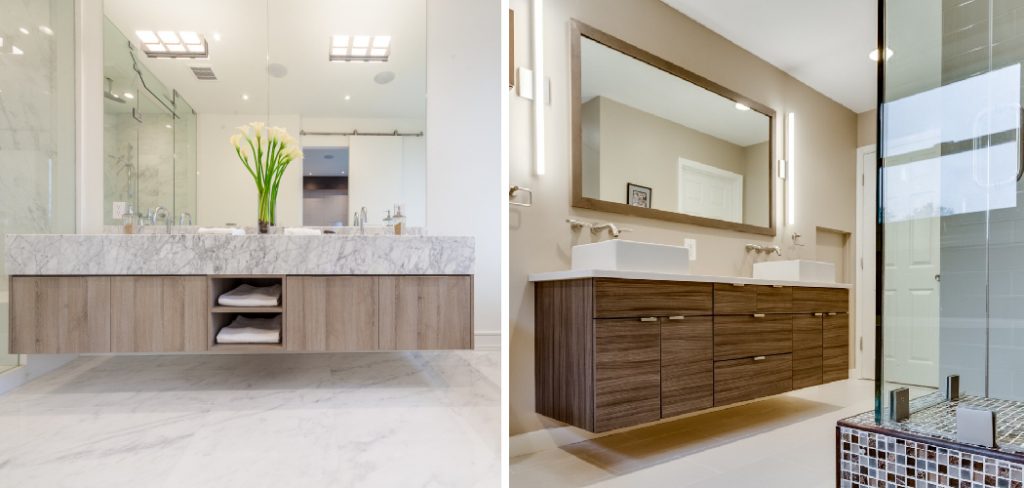
It is common for homeowners to invest in upgrading the look of their bathrooms, as these are often the main rooms of focus and must be attractive and functional. One way to improve a bathroom’s overall design and feel is by installing a floating vanity, which offers numerous benefits, including improved on-the-floor space organization, increased storage capacity, and more contemporary visual appeal.
Installing a floating vanity can seem like an overwhelming task. However, properly executed, it can transform your bathroom into something special while providing excellent daily use functionality – read on for our step by step guide on how to install floating vanity!
What Will You Need?
Before you begin the installation process, you must have the right tools and materials. The most important items that you will need are:
- Floating vanity of your choice
- Wall anchors (if needed)
- Drill and drill bits
- Level
- Screws/bolts with nuts
- Screwdriver or wrench
- Stud finder (optional)
Once you have all of the above items ready, you can begin the installation process!
9 Easy Steps on How to Install Floating Vanity
Step 1. Preparing Your Wall
Before you begin to mount the vanity, you will need to prepare your wall. First, use a stud finder to locate any studs in the wall where you plan to mount the vanity. If there are no studs present, drill pilot holes and insert wall anchors so that they can act as support when mounting the vanity.
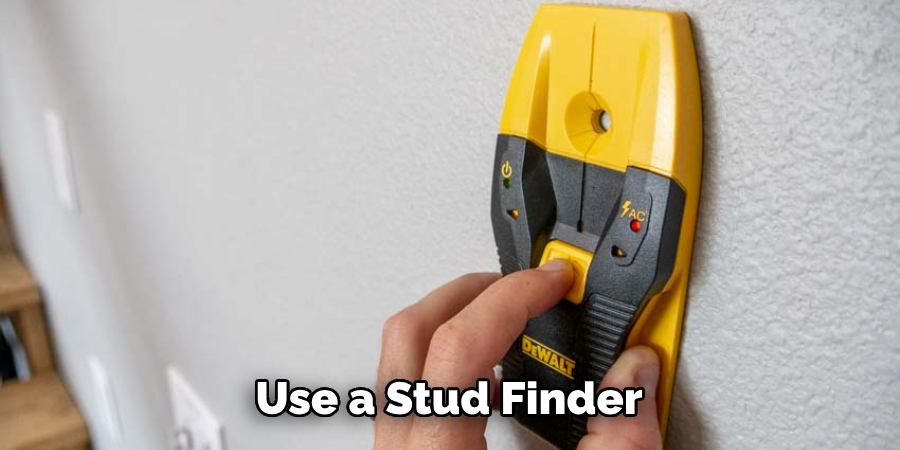
Step 2. Measuring and Marking
Once your wall is prepped, you can begin to measure and mark the vanity’s mounting points. Place the bottom of the vanity against the wall and use a level to make sure that it is properly aligned. Once aligned, trace around the base of the vanity with a pencil. This will give you an outline of where your holes need to be drilled.
Step 3. Drilling Holes into Wall
Using a drill, carefully drill the holes you have marked around the vanity’s base. Ensure that each hole is deep enough to fit the screws/bolts and nuts in place securely. Make sure not to drill too far into the wall, or it will compromise its structural integrity – you only want to drill as deep as needed.
Step 4. Attaching Vanity
Once all the holes are drilled, insert the screws through the backside of the vanity and secure them into place using nuts and a wrench or screwdriver. Once all the screws/bolts are in place, your floating vanity is securely mounted onto your bathroom wall! If there are any gaps, use caulk to fill them in and give the vanity a finished look.
Step 5. Final Touches
Once the vanity is securely mounted, you can add the finishing touches. Add your desired countertop accessories and any decorative items that will help give your bathroom a personalized touch. And voila – you have successfully installed a floating vanity in your bathroom!
Step 6. Keep it Clean
Now that your new vanity is installed, remember to keep it clean and well maintained. Regularly dusting the vanity’s surface will help keep it looking brand new for years to come! You can also use a mild cleaner if needed. However, be sure to avoid using harsh chemicals as this may damage the finish or color over time.
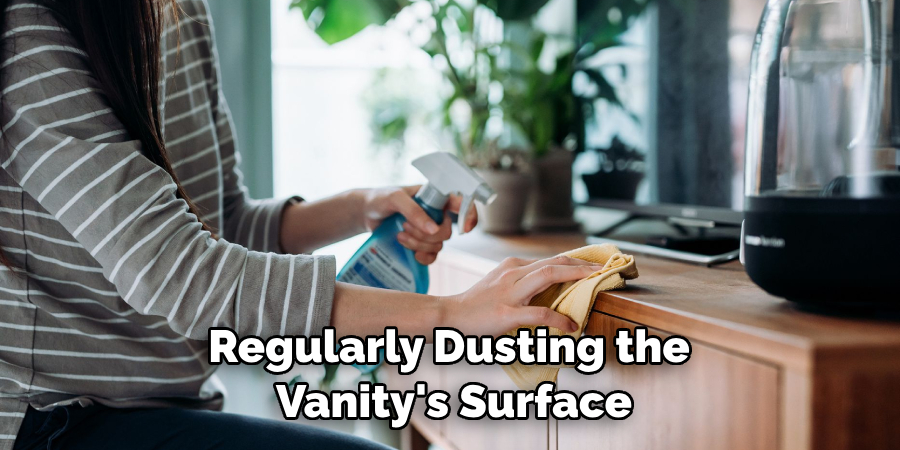
Step 7. Check For Stability
Once you have completed the installation process, checking that your vanity is properly secured and stable is important. Try pushing or shaking the vanity gently – if it feels secure, then you’re all set! If not, double-check all of your measurements and fasteners to ensure everything is in place and re-tighten as needed.
Step 8. Maintain!
Your new floating vanity is now installed and ready to be enjoyed. Be sure to keep up with regular maintenance and cleaning, as this will ensure that your bathroom stays looking great for years to come. With a few easy steps, you can transform your bathroom into something special – enjoy your beautiful new floating vanity!
Step 9. Enjoy!
Congratulations – you have successfully installed a floating vanity in your bathroom! Now that everything is set up, it’s time to enjoy the beauty of your new space. Stylish and modern, your floating vanity will surely be a statement piece in any home. Enjoy the convenience and elegance of this beautiful addition to your bathroom for years to come!
By following these simple steps, you can now easily install a floating vanity in your bathroom. With this classic and stylish look, you can turn any ordinary bathroom into something extraordinary!
5 Additional Tips and Tricks
- Ensure you have all the necessary tools and materials to install your floating vanity. You will need a level, drill and bit, screwdriver, screws, wood glue, shims, caulk gun, and towel bar mounting brackets.
- Measure the space twice before starting to ensure your vanity will fit properly in your chosen area.
- Place the vanity cabinets on either side of the wall and mark their position with a pencil or marker so you can install them easily later.
- Use shims to level the cabinet frames and secure them into place with screws. Make sure they are firmly attached to the wall.
- Attach towel bar mounting brackets to hang towels off your vanity. Use wood glue to secure them in place and caulk around the edges for a polished look.
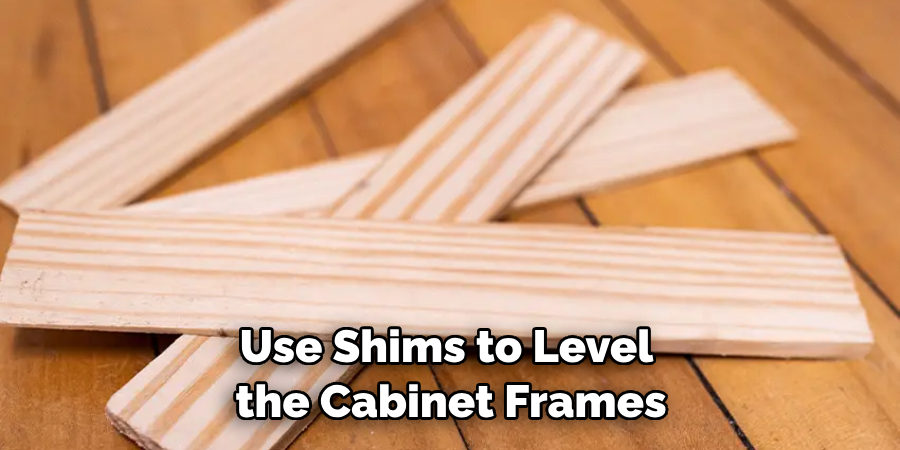
When you’ve finished installing your floating vanity, it’s important to check that your cabinets are level and securely attached so they don’t come loose down the line. Once you have checked everything and are satisfied with the installation, all that’s left to do is add the finishing touches, such as countertops and hardware. With these tips, you will have your floating vanity up in no time!
5 Things You Should Avoid
- Refrain from skimming on tools and materials, as this will affect the quality of your installation.
- Avoid rushing the measurements to save time – accurate measurements are key to a successful vanity installation.
- Remember to level the cabinets while mounting them onto the wall; using shims helps ensure they are even.
- Ensure you don’t attach the cabinets too tightly or loosely so they are secure when hung.
- Make sure to complete all steps, as doing so could lead to issues with your vanity down the line.
By following these tips and avoiding common pitfalls, you will be able to install a floating vanity in no time! When done correctly, it can add a modern touch to your bathroom while providing extra storage.
What Do You Put Under a Floating Vanity?
When installing a floating vanity, it’s important to consider what you put under the cabinet. For instance, if your vanity is being installed on an uneven surface, shims can be used to even it out. However, other materials, such as acoustic foam and plywood, can also be used depending on the structure of your walls or flooring.
It’s best to consult a professional before using materials to ensure your vanity is securely mounted and level. Additionally, adding insulation or extra padding under the vanity can help reduce noise from the pipes underneath.
When installing your floating vanity, it’s also important to make sure that you have enough space between the cabinet and floor for cleaning purposes. Depending on the type of material used, you can also add a waterproof membrane or sealant to protect your vanity from potential water damage.
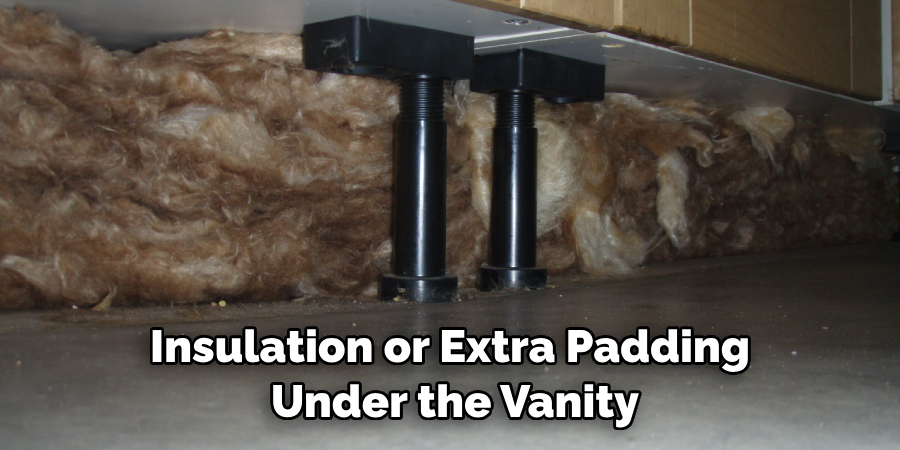
What is the Advantage of Floating Bathroom Vanity?
A floating bathroom vanity has many advantages. The main advantage is that it allows for extra storage and doesn’t take up any floor space, making your bathroom appear more spacious. Additionally, because the vanity is mounted to the wall, it’s easier to clean underneath as no cabinets or drawers are in the way.
Floating vanities also come in various styles and sizes, so you can find one that fits the style of your bathroom. Finally, they are more affordable than traditional vanities as they don’t require any additional cabinets or countertops.
Overall, installing a floating vanity in your bathroom is an effective way to make the most out of limited space while adding extra storage and modernizing the look of your bathroom. With the right materials and tools, you can easily install a floating vanity in no time!
Conclusion
Installing a floating vanity in your bathroom can be a great way to add style and elegance to the room. With the help of this article, you now have all the information and steps needed to get it installed correctly and efficiently!
Floating vanities offer plenty of design advantages over traditional vanities. You’ll be able to maximize space, accessorize, and create a unique look in your bathroom. Planning through each step is key to guaranteeing success with installing a floating vanity.
Just remember measurements, secured support, precise level checks, and thorough sealing for the installation. Additionally, with added techniques like grout application or caulk coating, you’ll have an amazing finish overall! If done properly you’ll be satisfied that you made the right choice installing your new floating vanity!
Hopefully, this article on how to install floating vanity has given you the confidence and knowledge needed to install a floating vanity in your own bathroom. With these tips, you’ll have your beautiful vanity installed in no time! So take caution as you go through this process, and you’ll be boasting a unique bathroom with an organized yet stylish touch!

